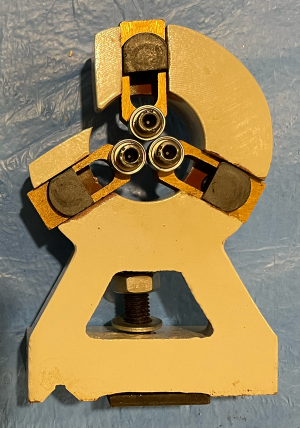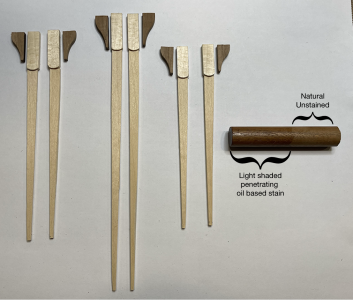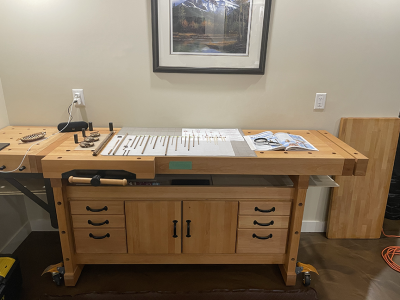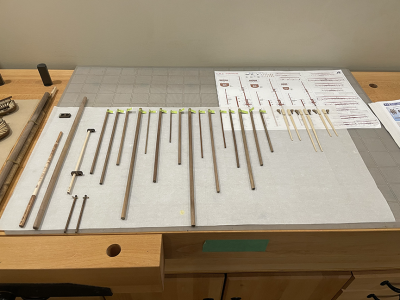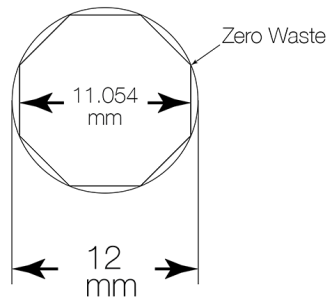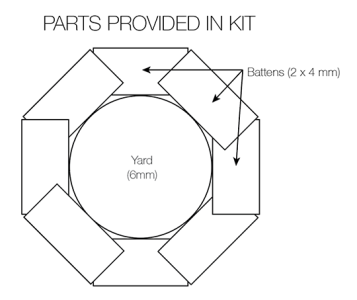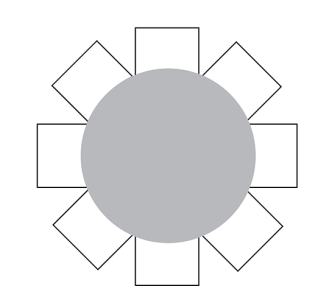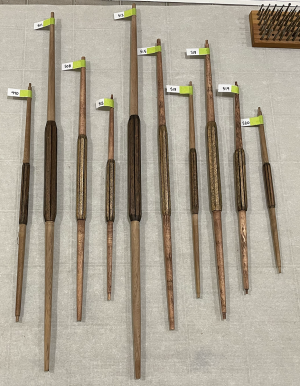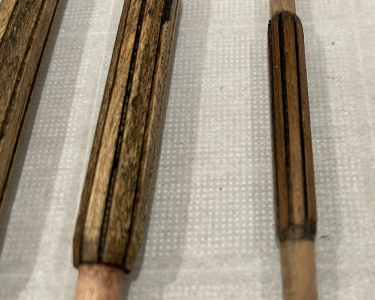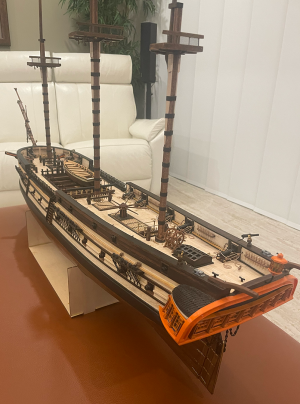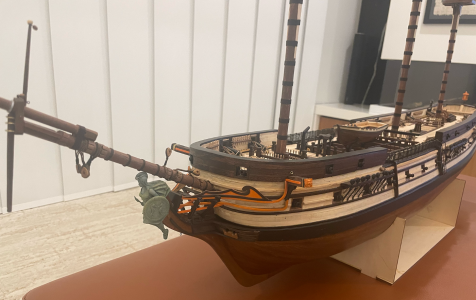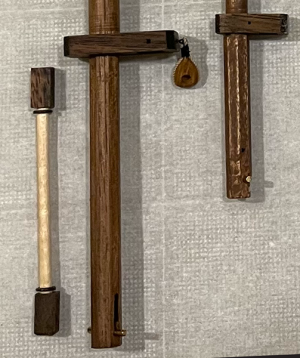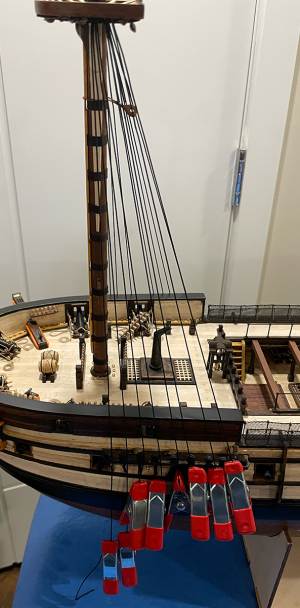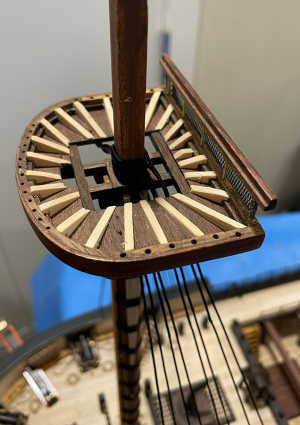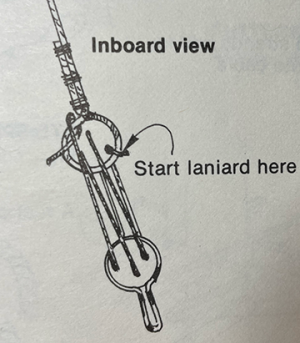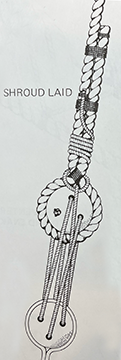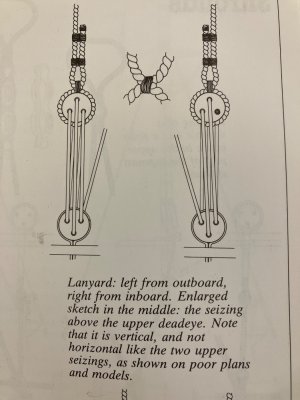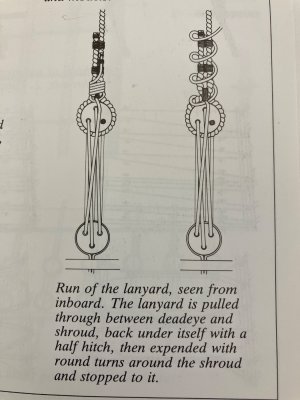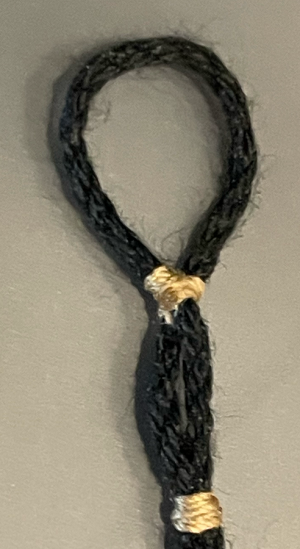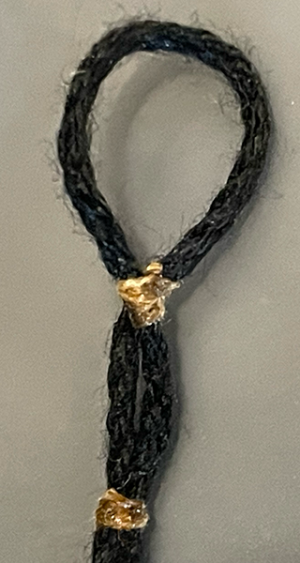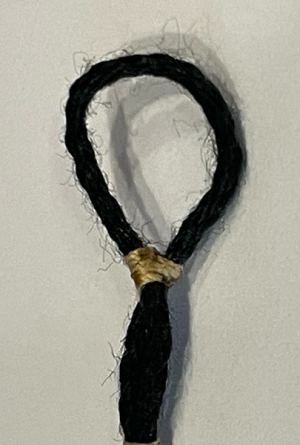Work has been keeping me away from home, but I've spent a bit of time on the ship this weekend. I've installed a number of parts that I knew were going to be difficult to do properly (considering my lack of experience with these). I completed the netting (screen) on the dec stanchions. Yay!
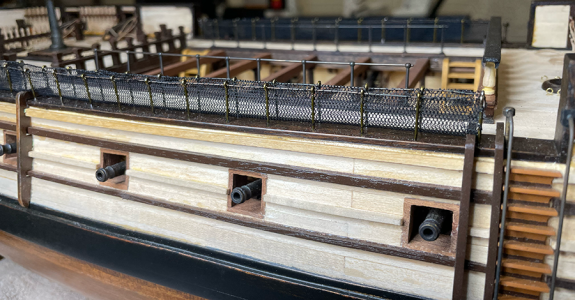
Managed to get the yards and masts (which were delivered last week, and replaced the warped dowels from the kit) tapered on my lathe. I'm sure that a smaller lathe would make this easier, but the tool rest on my machine spans almost the entire length of the yards. This made it easy to get near-perfect tapers.

I've made 8-square items before, but they were all furniture size. Doing these small units was a concern, however the 12-stops on the lathe made it a walk-in-the-park.

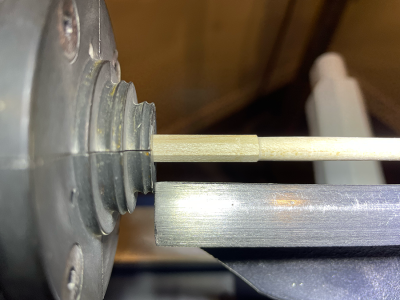
Work on the yards will take longer than I originally estimated as so many of these require battens. In the following image I've roughed-in 3 of these batten yards. All of the yards which have two parallel green masking tapes near the centre also require battens.

When I researched these "battened yards" using James Lees book I noticed that they should have iron rings around them to secure the battens. The A.L. plans do not include these and call for rope to be used instead. If I can find some thin brass sheets in my stored stuff, then I'll make these rings. Otherwise I'll just follow the kit plan.

I couldn't find profile images or advice for exactly how these batten should appear (from the side). So I used my collection of router "rounding bits" to
make the side of the batten that contacts the yard the same profile as the yard. This avoided gaps. I like the look, but am uncertain if this is correct.

While working on the yard and mast "tapering", I made use of my smallest steady-rest. This unit saved me great frustration and permitted me to stick to my self-imposed accuracy limit of +/- 0.05mm for all measurements.
